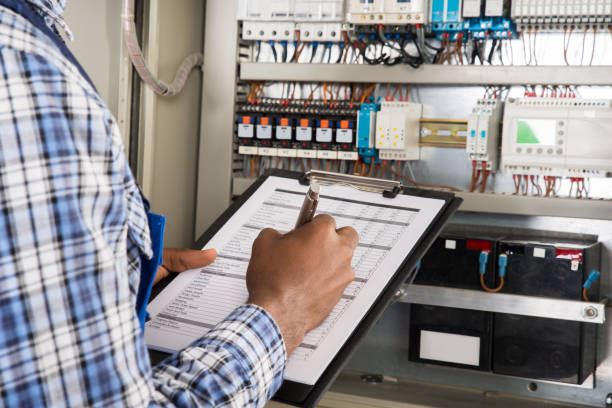
The Essential Guide to the EICR Certificate: Ensuring Electrical Safety and Compliance
An EICR (Electrical Installation Condition Report) is more than just a piece of paper; it represents a comprehensive and critical assessment of a property’s entire electrical infrastructure. Its primary goal is to ensure that the wiring, consumer unit, accessories, and all associated electrical systems meet the latest, stringent safety standards set out by the UK’s IET Wiring Regulations (BS 7671). This certificate is so fundamental to electrical safety that it has acquired several common names, including the Landlord Safety Test, Electrical Safety Certificate, or for those buying a home, the Homebuyer’s Electrical Test.
Whether you are responsible for a small domestic flat or a large commercial facility, a valid and up-to-date EICR is absolutely essential for both safety and legal compliance. For landlords, this report is not merely a recommendation—it is a mandatory legal requirement. The legislation dictates that a landlord must be able to demonstrate that all electrical installations within a tenanted property are safe and free from hazards, thereby offering crucial protection to tenants.
When an EICR Inspection is Required
The need for an EICR is dictated by the type of property, its use, and its last inspection date:
- For Landlords (Domestic Tenancies): The law is clear: an EICR inspection must be carried out every five years or sooner if your most recent report specifies a shorter interval. The report must be given to all new tenants before they move in, and to all existing tenants within 28 days of the inspection.
- For Homeowners (Domestic Properties): While not legally mandated for owner-occupiers, it is highly recommended to have an EICR performed every ten years. This proactive approach ensures that your home’s electrical systems—which naturally deteriorate over time—remain in safe working order, protecting your family and your property.
- For Commercial Properties: Due to the often-heavier and more complex electrical demands in commercial settings, the frequency of EICR inspections is often higher, ranging from every one to five years, depending on the environment, usage, and the findings of the previous report.
- Property Transfers & Agreements: It is standard practice for solicitors, lenders, and mortgage providers to request a valid EICR as a necessary part of the finalisation process for any property sale, purchase, lease renewal, or rental agreement.
The Rigorous Inspection Process and Safety Rating
The EICR is a comprehensive process that is legally required to be conducted by a qualified and competent electrical inspector. It is never a DIY task due to the technical nature of the required testing.
The inspection involves two main stages:
- Systematic Visual Checks: The electrician starts with a thorough visual inspection, examining the accessible parts of the system. This includes checking the consumer unit (fuse board), sockets, light switches, and light fittings for any signs of damage, burning, wear, or incorrect labelling. They also confirm the adequacy of earthing and bonding connections.
- Specialised Safety Testing: Using highly calibrated equipment, the inspector conducts a series of technical tests. These tests measure the integrity of the system, including:
- Insulation Resistance: To ensure the wiring insulation has not broken down.
- Earthing and Bonding Adequacy: To verify that safety devices can rapidly divert a fault current.
- RCD/Circuit Breaker Function: To ensure protective devices trip quickly enough to prevent electric shock.
Understanding the EICR Observation Codes
Any fault or deviation from the standard identified during the inspection is assigned a specific classification code, which indicates the level of risk and urgency:
- C1 (Danger Present): This is the highest severity code, meaning there is an immediate risk of injury. The electrical installer is often required to take immediate remedial action, which usually involves isolating the circuit or power supply before they leave the premises.
- C2 (Potentially Dangerous): This indicates that while the danger is not immediate, a potentially dangerous defect has been identified. Urgent remedial work is required to prevent the situation from deteriorating into a C1 risk.
- FI (Further Investigation Required): This code is given when a potential issue is detected that needs a deeper look, perhaps by opening up a wall or tracing a circuit. This is necessary to rule out a hidden, underlying danger.
- C3 (Improvement Recommended): This is a non-dangerous observation that simply suggests upgrading an aspect of the installation to meet modern standards or best practices.
The Final Report and Compliance
Upon completion, the entire installation is given one of two overall ratings:
- Satisfactory: This rating is issued only if no C1, C2, or FI codes are present. The property is compliant and deemed safe for continued use.
- Unsatisfactory: Any single instance of a C1, C2, or FI code will result in an Unsatisfactory rating. This means the property is non-compliant, and the defects must be addressed—known as remedial work—before a new, satisfactory certificate can be issued and the property is legally safe.
For Landlords, Home Buyers & Sellers, and Domestic & Commercial Properties: Ensuring your electrical system is certified is a vital investment in safety and asset protection.
Call today to discuss your requirements and benefit from our flexible availability. Ask about our Multi-Service Order Discount Available when booking an EICR alongside other safety certifications.
